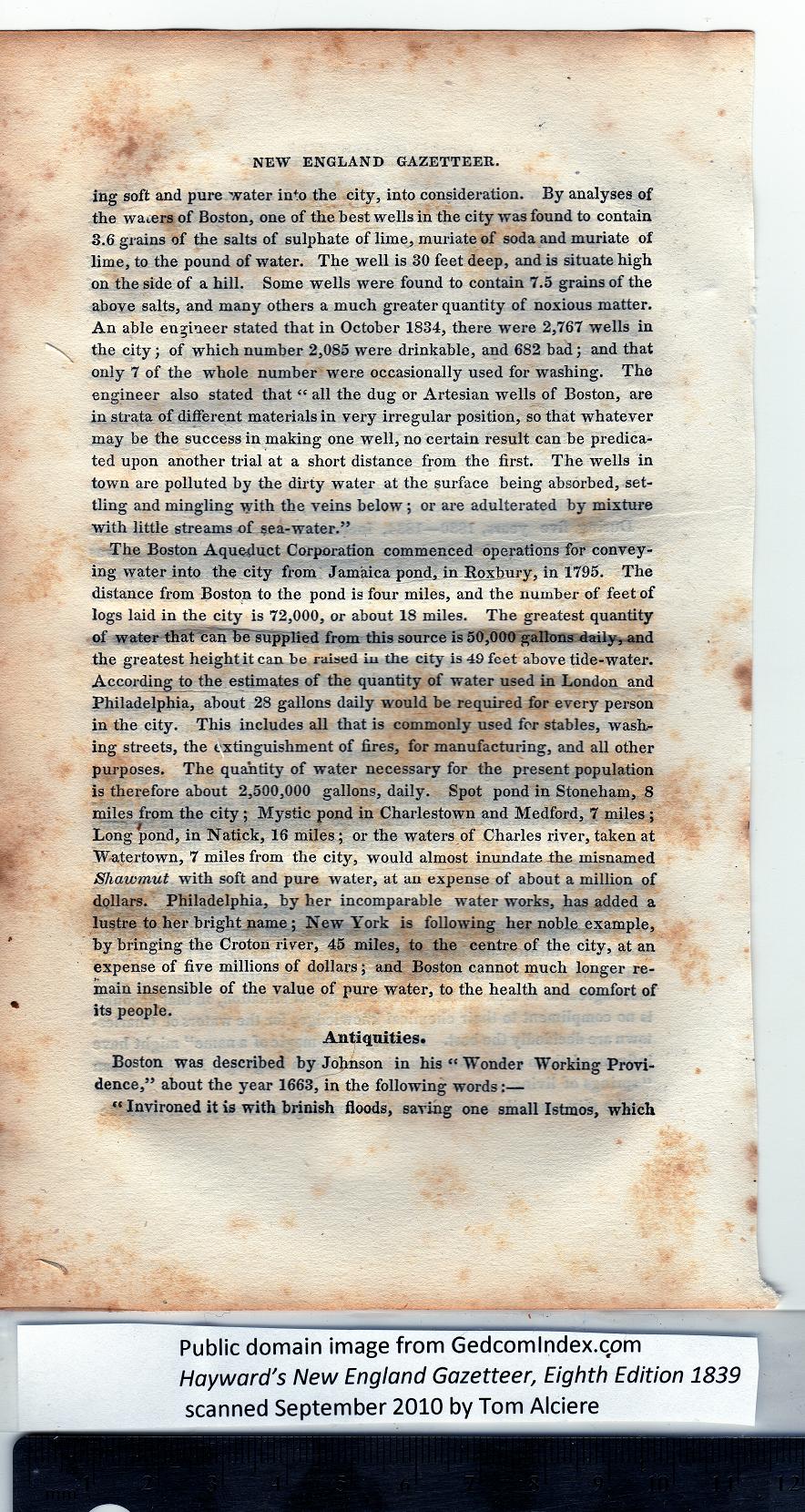|
NEW ENGLAND GAZETTEER.
ing soft and pure water into the city, into consideration. By analyses of
the waters of Boston, one of the best wells in the city was found to contain
3.6 grains of the salts of sulphate of lime, muriate of soda and muriate of
lime, to the pound of water. The well is 30 feet deep, and is situate high
on the side of a hill. Some wells were found to contain 7.5 grains of the
above salts, and many others a much greater quantity of noxious matter.
An able engineer stated that in October 1834, there were 2,767 wells in
the city; of which number 2,085 were drinkable, and 682 bad; and that
only 7 of the whole number were occasionally used for washing. The
engineer also stated that “ all the dug or Artesian tvells of Boston, are
in strata of different materials in very irregular position, so that whatever
may be tbe success in making one well, no certain result can be predica-
ted upon another trial at a short distance from the first. The wells in
town are polluted by the dirty water at the surface being absorbed, set-
tling and mingling with the veins below; or are adulterated hy mixture
■with little streams of sea-water.”
The Boston Aqueduct Corporation commenced operations for convey-
ing water into the city from Jamaica pond, in Roxbury, in 1795. The
distance from Boston to the pond is four miles, and the number of feet of
logs laid in the city is 72,000, or about 18 miles. The greatest quantity
of water that can be supplied from this source is 50,000 gallons daily, and
the greatest height it can be raised in the city is 49 feet above tide-water.
According to the estimates of the quantity of water used in London and
Philadelphia, about 28 gallons daily would be required for every person
in the city. This includes all that is commonly used for stables, wash-
ing streets, the extinguishment of fires, for manufacturing, and all other
purposes. The quantity of water necessary for the present population
is therefore about 2,500,000 gallons, daily. Spot pond in Stoneham, 8
miles from the city; Mystic pond in Charlestown and Medford, 7 miles ;
Long pond, in Natick, 16 miles; or the waters of Charles river, taken at
Watertown, 7 miles from the city, would almost inundate the misnamed
Shawmut with soft and pure water, at an expense of about a million of
dollars. Philadelphia, by her incomparable water works, has added a
lustre to her bright name; New York is following her noble example,
hy bringing the Croton river, 45 miles, to the centre of the city, at an
expense of five millions of dollars; and Boston cannot much longer re-
main insensible of the value of pure water, to the health and comfort of
its people.
Antiquities*
Boston was described by Johnson in his “Wonder Working Provi-
dence,” about the year 1663, in the following words:—
" Invironed it is with brinish floods, saving one small Istmos, which
PREVIOUS PAGE ... NEXT PAGE
This page was written in HTML using a program written in Python 3.2 and image-to-HTML text generated by ABBYY FineReader 11, Professional Edition.
|
